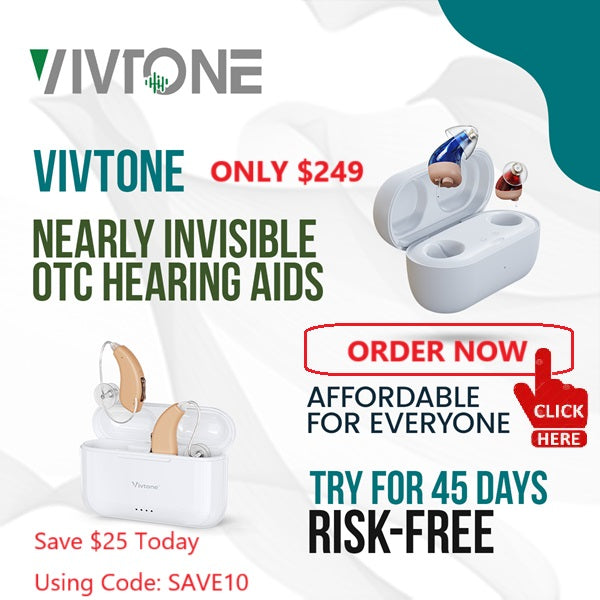How Much Do Hearing Aids Cost? A Complete Breakdown
Navigation
- What is the Cost of Hearing Aids and Devices?
- What's Included in Hearing Aid Costs?
- What Are the Factors That Impact the Costs of Hearing Aids?
- How to Reduce Hearing Aid Costs
- Frequently Asked Questions About the Cost of Hearing Aids

A major barrier preventing many people from seeking hearing aids is the high cost, often thousands of dollars. However, understanding what factors influence prices, what is included, and ways to reduce costs helps determine if quality hearing aids are achievable for your budget. Learning about technology impacts, bundled services, insurance coverage, and affordability strategies empowers smart choices for your hearing health investment. Prioritizing your ability to hear well enables fuller social, cognitive, and professional well-being.
What is the Cost of Hearing Aids and Devices?
On average, a single hearing aid device will cost in the range of $1,000-$4,000. Most individuals need two hearing aids-one fitted for each ear-bringing their total investment to $2,000-$8,000 to get fully fitted with properly programmed devices.
There are many different types and styles of hearing aids, each coming with their own range of prices.
Hearing aids are available in a variety of styles to accommodate different levels of hearing loss. The cost of a hearing aid depends on how much it is personalized for you and the special features it has.
1. In-the-Ear (ITE) Hearing Aids
ITE aids fit entirely in the outer ear in a compact plastic shell. Discreet and suitable for mild to severe hearing loss, a single ITE device typically costs around $3,000. The price depends on the customization level.
2. Behind-the-Ear (BTE) Hearing Aids
BTE aids have components in a casing behind the ear, connected by tubing to an ear tip or mold. They work for mild to profound hearing loss. Leading BTE brands range from $2,700-$3,200 per aid.
3. Receiver-In-Canal (RIC) Hearing Aids
RIC aids have a small speaker inside the ear canal linked by a thin wire to the behind-the-ear unit. For mild to severe hearing loss, RIC devices average over $2,400 each.
4. In-the-Canal (ITC) Hearing Aids
ITC aids fit partially in the ear canal and outer ear. Balancing discretion and ease of use, they help those with mild to severe hearing loss. ITC prices range widely, from $2,500-$4,900 per aid.
5. Completely-In-Canal (CIC) Hearing Aids
Even smaller CIC aids offer a virtually invisible solution for mild to moderate hearing loss. Customization affects pricing, from $1,500-$4,000 per device.
6. Invisible-In-Canal (IIC) Hearing Aids
IIC aids are the smallest available, fitting deep in the canal. Besides being unnoticeable, they accommodate hearing needs. Like CIC pricing, custom IIC aids range from $1,500-$3,100 each.
It's advisable to consult an audiologist to select the right balance of style, features, and affordability for your hearing health. When shopping for hearing aids, consider affordable options from Vivtone. This brand offers styles including completely-in-canal, rechargeable, invisible, Bluetooth, behind-the-ear, receiver-in-canal, and over-the-counter hearing aids ranging from $100 to $700. This is likely to be much more cost-effective than the premium brands that dominate the current market.
For children and those with more specialized needs, costs for bone-anchored hearing aids, cochlear implants, and other devices differ from standard prices. Pediatric hearing aid prices are often lower, with more insurance coverage options. But advanced implants and aids for severe impairment can be more expensive. Overall, the range remains very wide.
What's Included in Hearing Aid Costs?

It's important to understand everything that factors into the bundled price of most hearing aids offered through audiologist offices and clinics. The costs include far more than simply the hearing aid device itself. Most providers bundle together the device with professional services like:
- Initial hearing tests and consultations
- Fittings to properly place the hearing aid and make any necessary molds
- Programming and adjustments to calibrate the device settings to your specific hearing needs
- Follow-up appointments to fine-tune performance and fit
- Routine cleanings and maintenance
- Repairs and replacements under warranty period
- Supply of batteries or charging equipment
This bundling simplifies the process but means the hearing aid itself appears more expensive than the retail cost alone. Bundled pricing averages $2,500-$4,500 for a pair from a licensed audiologist. Some offices give the option to "unbundle" services and pay for each individually, which saves money upfront on the devices. But additional visits and services add costs over time.
With over-the-counter (OTC) hearing aids now available without a prescription, you can get just the hearing device for $300-$1,500 per aid.
What Are the Factors That Impact the Costs of Hearing Aids?
The most significant factor affecting hearing aid prices is the level of technology and features included. More advanced hearing aids with things like Bluetooth connectivity, rechargeable batteries, and artificial intelligence noise reduction capabilities will range higher in price. More basic models with fewer features and settings can lower costs but may not provide the same level of hearing improvements and benefits.
Research and development also impact pricing. Companies invest millions into engineering more effective devices each year. And with a relatively small consumer base purchasing hearing aids currently, costs are concentrated. Customization and miniaturization of hearing aids to fit comfortably and discreetly in the ear canal also boosts expenses.
The bundled services approach tends to inflate the apparent device prices. And limited insurance coverage for hearing costs spreads pricing over fewer consumers as well. But over time, as with most electronics, improved technological capacity often brings prices down while increasing the value.
How to Reduce Hearing Aid Costs

If hearing aids are outside your budget, don't despair. There are many strategies to lower the overall investment and find the best hearing solution accessible to you:
- Opt for unbundled services from an audiologist to only pay initially for the hearing aids themselves. Then, add on maintenance or repairs as needed over time.
- Utilize tax-advantaged health savings or flexible spending accounts to purchase aids with pre-tax income.
- Check warehouse stores that offer discounted hearing aids and bundles.
- Consider quality OTC hearing aids for mild-moderate loss. But you lose some customization.
- Choose models with fewer features like Bluetooth or rechargeable batteries you may not need. More basic aids cost less.
- Inquire about insurance coverage, VA benefits, and Medicaid hearing aid programs that could provide some costs.
- Ask your audiologist about payment plans or in-house financing options that break up costs monthly.
- Purchase refurbished or used hearing aids to save significantly. Get them inspected first.
- Compare pricing and bundle offers from multiple providers to find the best deal.
Conclusion
The investment in hearing aids does require a substantial financial commitment. But improving your hearing ability with properly fitted devices provides immense benefits to your communication, career, relationships, safety, cognitive function, and overall quality of life. For many, that value outweighs the costs in the long run. But work closely with your audiologist to optimize price, technology, and ideal features for your needs and budget. Prioritizing your hearing health is an investment in your happiness and well-being for years to come.
Frequently Asked Questions About the Cost of Hearing Aids
Q1: Are there any free or low-cost hearing aid options?
Nonprofit organizations, Medicaid, VA benefits, and some insurance plans can provide free or discounted hearing aids if qualified. Also, research device donation programs.
Q2: Should I purchase extra warranty coverage?
Extended warranties can provide peace of mind but add costs. Evaluate the likelihood of the need for repairs/loss and compare plans to decide if they are worthwhile.
Q3: How much should an affordable hearing aid cost?
Budget hearing aids typically cost $300-$1,500 per device when purchased online or over-the-counter. Audiologist-fit entry-level models usually start around $1,500-$2,000 each.
For a more affordable option, consider hearing aids from Vivtone. They offer various styles ranging from $100-$700 per aid. Vivtone provides quality sound amplification at a lower price point, making hearing aids more accessible.
Q4: Do you need a hearing aid for both ears?
Most people need two hearing aids, one fitted for each ear, to enable binaural hearing and allow you to determine the direction of sounds. But those with hearing loss in just one ear can get by with one.
Q5: Can you buy hearing aids online?
Yes, you can purchase hearing aids online without a prescription. Over-the-counter (OTC) hearing aids for mild-moderate impairment cost $200-$1,500 per aid online.
Q6: Does insurance cover hearing aids?
According to the National Council on Aging, insurance coverage for hearing aids is very limited. Most plans do not cover the full costs of hearing aids and associated services.
Some private insurers and Medicare Advantage programs offer bundled coverage, including partial payment for hearing exams and devices. Others provide supplemental coverage separately like they do for vision and dental.
Q7: Are hearing aids tax deductible?
If medically necessary, hearing aids and exams can count toward medical expense tax deductions if total costs exceed 7.5% of your adjusted gross income.
Q8: How long do hearing aids last?
With proper maintenance, the average lifespan of digital hearing aids is 3-7 years. Well-cared-for analog models may last up to 10 years. Usage, fit, and earwax buildup affect longevity.





